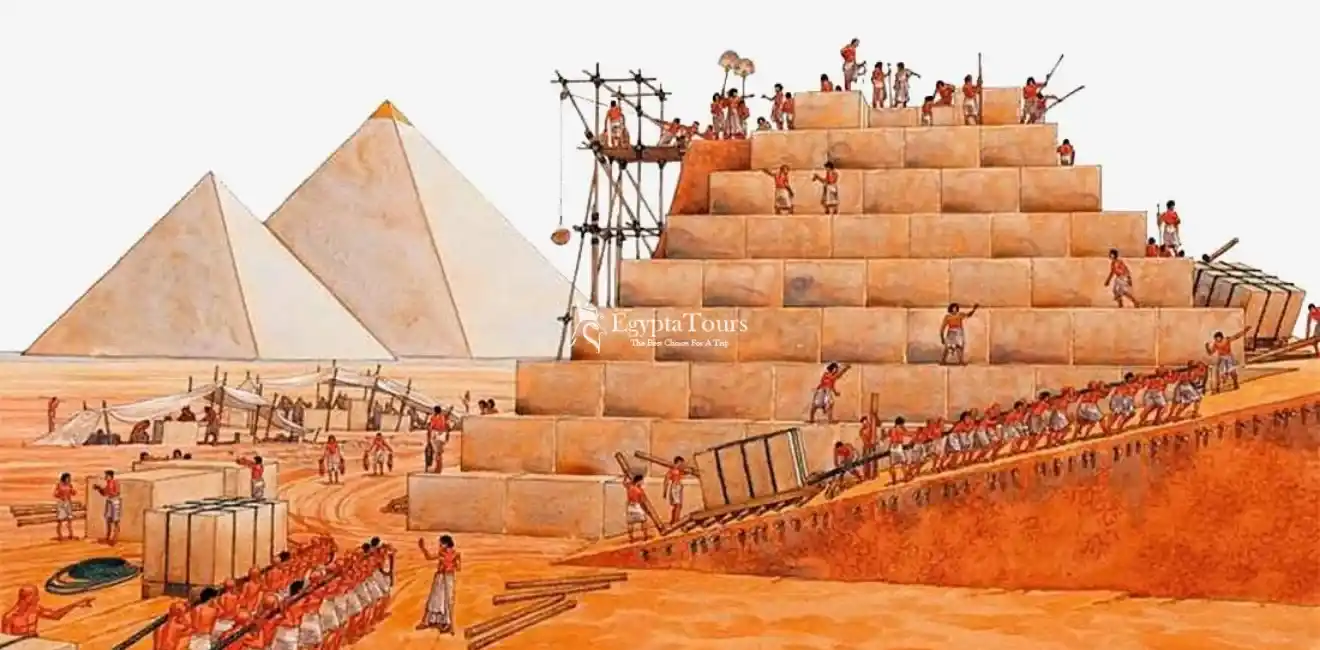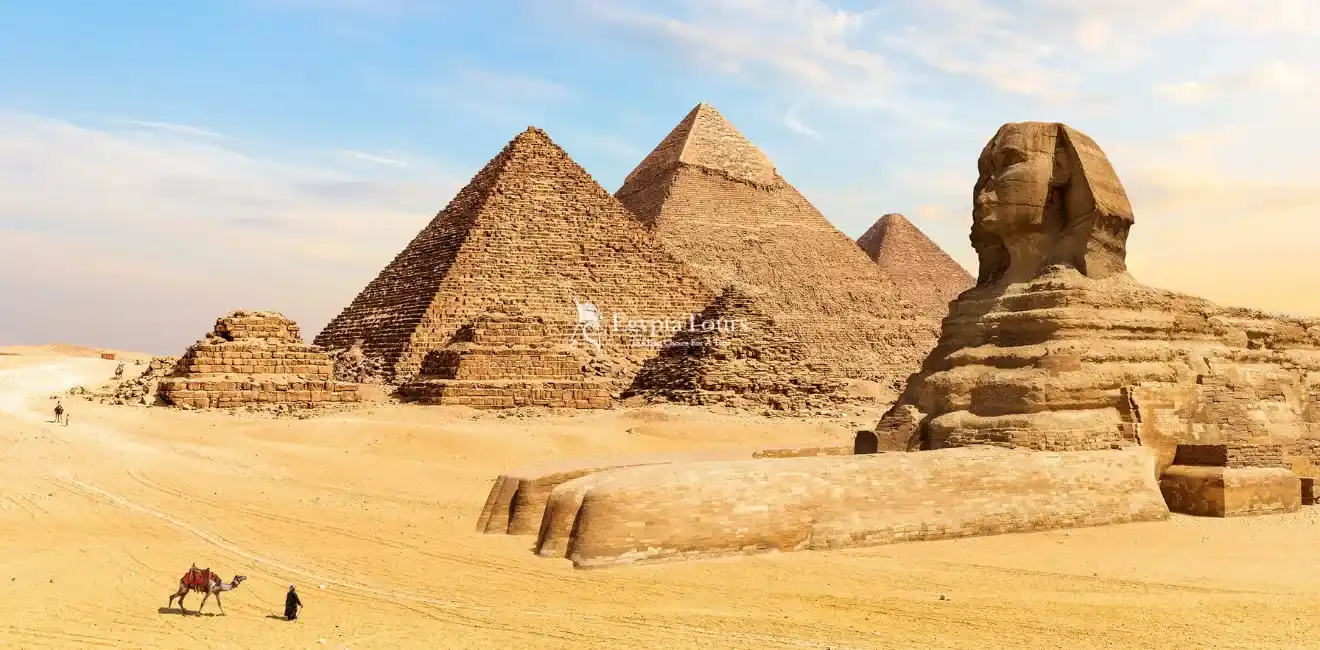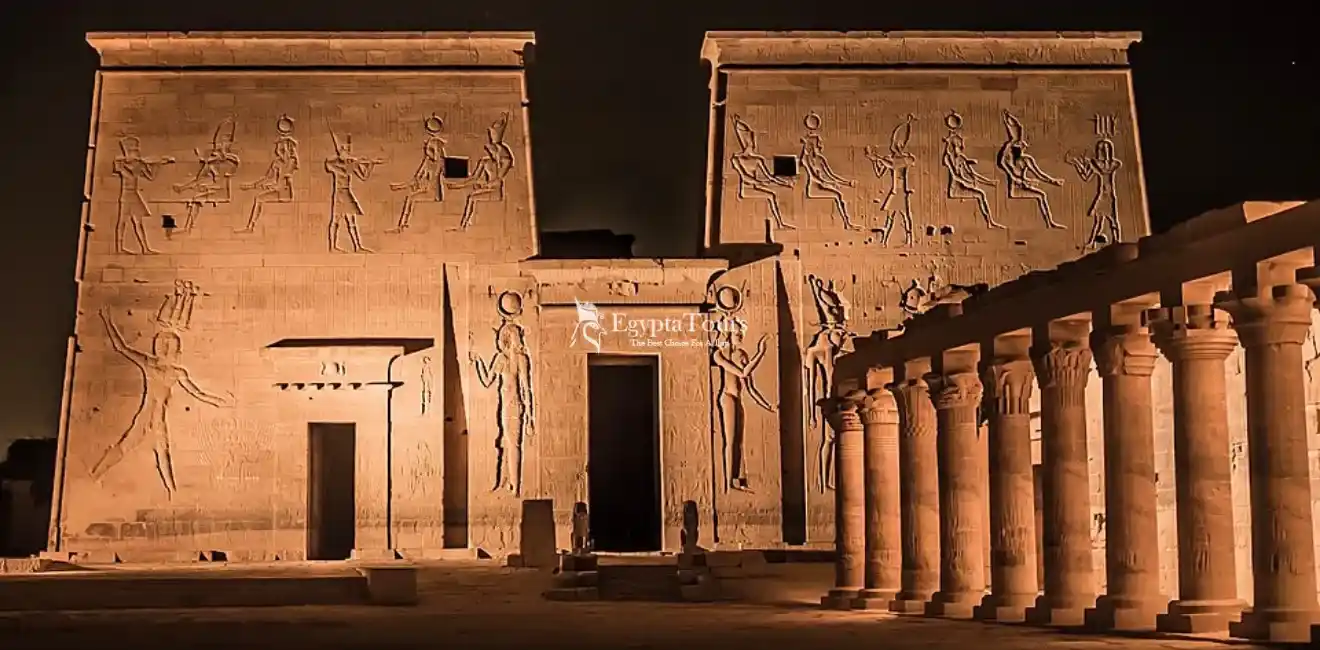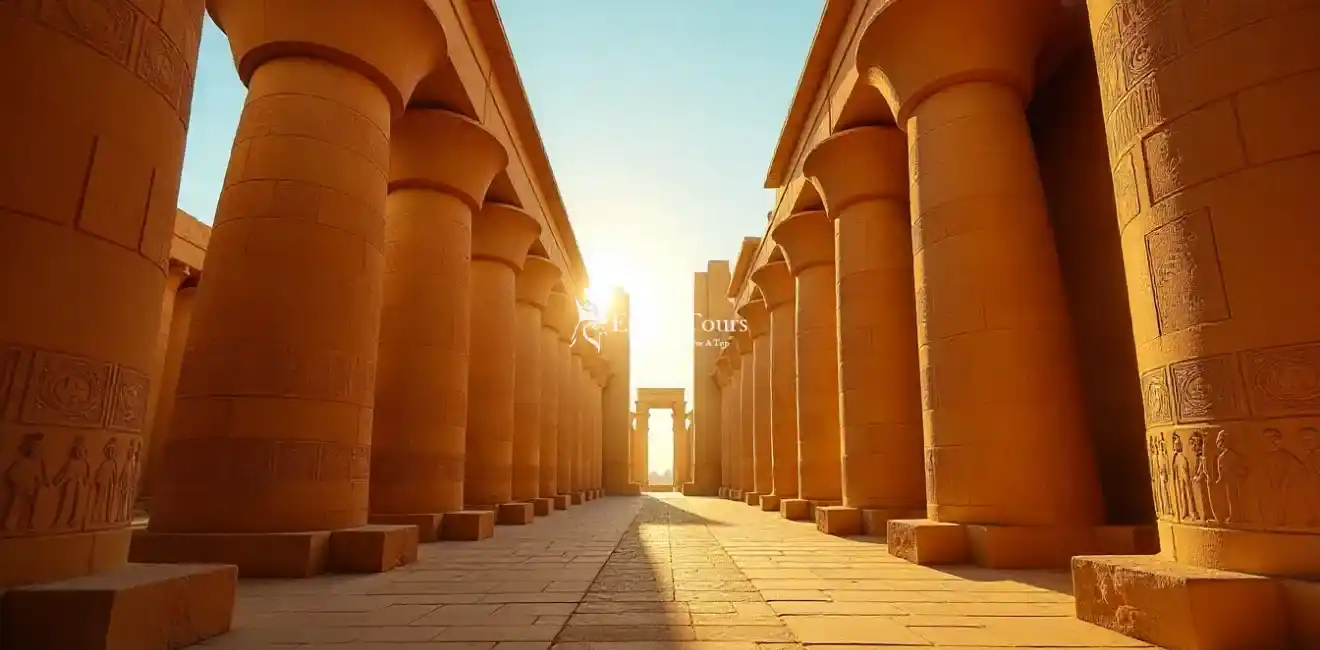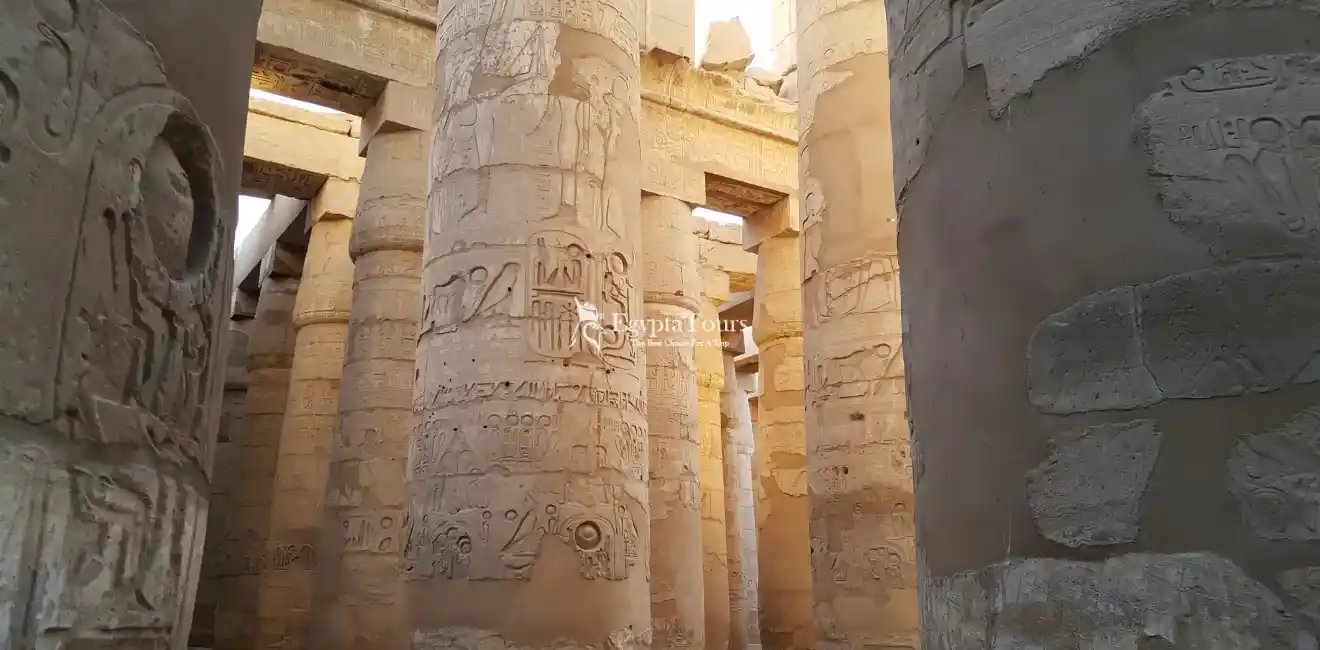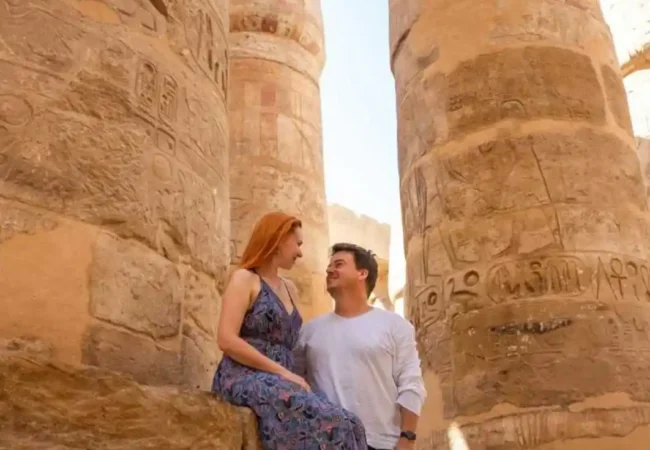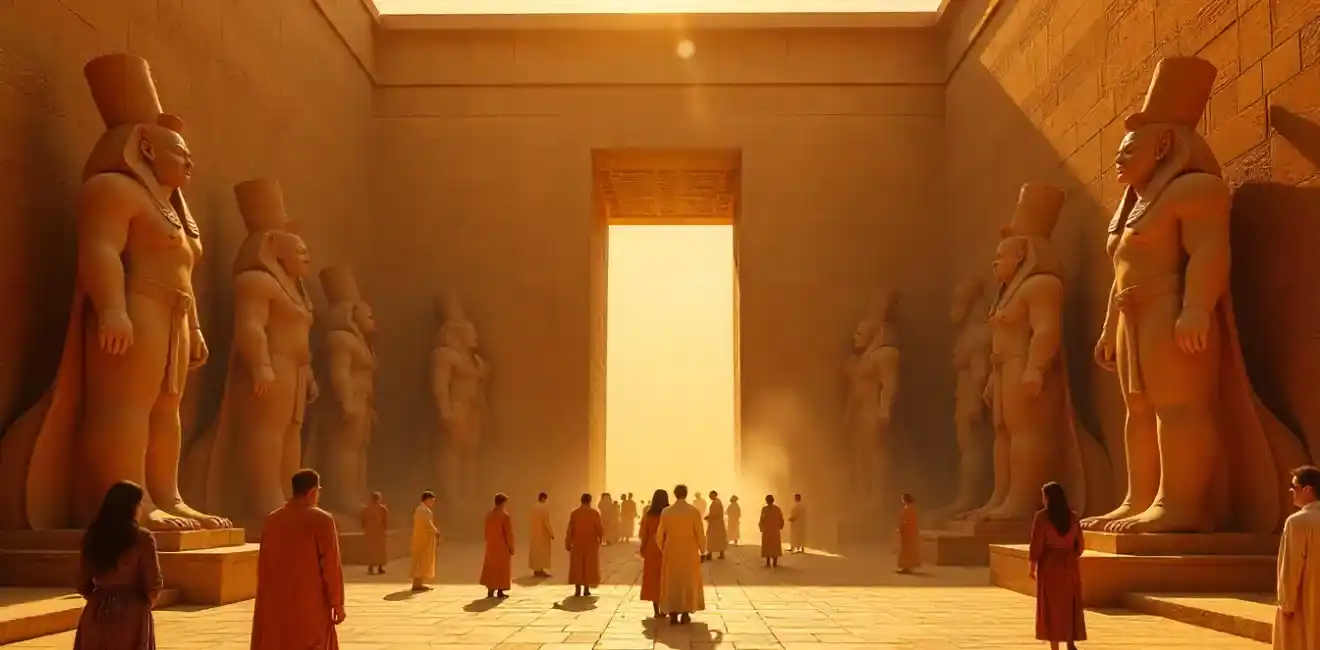
Ancient Egyptian Architecture
Ancient Egyptian Architecture expresses the ancient civilization that flourished on the banks of the Nile. It also bears witness to human genius, as they left an architectural legacy that amazes the world to this day, from the construction of massive, towering pyramids to large temples. Through this article, we will learn more details that will add much to your esteemed knowledge.
Ancient Egyptian Architecture is a reflection of the civilization and beliefs of the ancient Egyptians, whether religious, political, or social. It was an expression of power and eternity, as they believed, and an indication of the power of the pharaohs and their practical and engineering progress.
It was designed with high precision, featuring many hieroglyphic inscriptions and decorations. Many strong materials such as granite and limestone were used in its construction. Perhaps the most prominent examples are the pyramids, temples, tombs, palaces, and houses.
What materials did the ancient Egyptians use to build their structures?
Various materials were used to build Ancient Egyptian Architecture, most importantly mud bricks and stones of various types such as sandstone, limestone, and granite. Stones were used to build funerary temples, mastabas, and tombs, while mud bricks and wood were used to build houses and forts.
In ancient times, they believed that tombs and temples were the houses of permanence and eternity, so they were careful to build them away from agricultural areas so that the Nile floods would not affect them. They also believed that houses were transient.
Due to the success of the Egyptians in many sciences such as astronomy, engineering, and mathematics, the construction process was carried out on a scientific basis with great skill and high precision.
What are some of the most famous ancient Egyptian architectural structures?
There are many architectural arts in ancient Egypt, but the most famous are the following:
- The Pyramids of Giza: Tourists from all over the world come to see this great architectural structure, as the Great Pyramid is the largest pyramid ever built in history.
- Karnak Temple: This temple contains the Great Hypostyle Hall, which has 134 columns decorated with many hieroglyphic inscriptions.
- Luxor Temple: This temple blends religious and political beauty and was dedicated to the god Amun, his wife, and his son. The Avenue of Sphinxes connects it to Karnak Temple.
How did religion affect ancient Egyptian architecture?
Religion greatly affected Ancient Egyptian Architecture, as it was a manifestation of the beliefs and doctrines of the ancient Egyptians. Temples were houses for the gods and not just places dedicated to worship, so they were designed to reflect the other world, in their belief, and the stages of creation.
The pyramids, in their beliefs and myths, were not built to immortalize the pharaoh as is commonly known, but were a spiritual ladder to ascend to the sky and achieve eternity with the gods.
This was their belief. Hence, their pyramidal shape symbolized the sun’s rays, and the decorations and symbols spoke of their creed.
What was the purpose of the pyramids in ancient Egypt?
The pyramids were built to be the tombs of the pharaohs, in their belief in resurrection and eternity, as follows:
- They believed that the pyramids were their final resting place, where they would be buried with all their valuable possessions to be used in the afterlife, as they believed.
- They believed that the pyramids were a bridge that helped the soul after death to reach the sky and the gods.
- The pyramids were considered a place of honor for the deceased, in addition to being a center and shrine for the worship of the gods.
- The pyramids are one of the physical proofs that demonstrate the progress of ancient Egyptian societies, showing their full knowledge of many sciences.
Types of Ancient Egyptian Architecture
Ancient Egyptian Architecture was diverse, with each type expressing one of the aspects of the ancient Egyptians’ lives. Among them are the following:
- Religious Architecture: Its forms are numerous, most notably temples such as Karnak, Abu Simbel, and Luxor, in addition to pylons and courtyards. All their decorations were designed to glorify the gods.
- Funerary Architecture: Its importance lies in securing the pharaoh’s life after his death, in their belief in resurrection and eternity. The most prominent examples are the Pyramids of Giza, rock-cut tombs, mastabas, and funerary temples.
- Administrative and Military Architecture: The purpose of creating this architecture was to organize and manage state affairs. The most prominent examples are royal palaces, forts, defensive structures, and royal storerooms.
- Residential Architecture: It was built from mud bricks and the most prominent examples are the simple houses of the people and the palaces of kings and nobles, which used courtyards and columns.
The Impact of Ancient Egyptian Architecture
Ancient Egyptian Architecture expressed their religious beliefs and the idea of resurrection and eternity. This was clearly evident in the construction of large, massive temples, in addition to the royal tombs prepared in the pyramids to protect the kings after their death according to their beliefs.
Architecture expressed the status and power of the ancient Egyptians. They were able to preserve history through drawings, inscriptions, decorations, and events recorded on the walls, which still remain to this day, indicating the precision of the construction and the use of the strongest materials in it.
Characteristics of Ancient Egyptian Architecture
Ancient Egyptian Architecture is characterized by many features that helped it to be timeless and unique, including the following:
- The careful use of the strongest stones like granite, limestone, and others that last for thousands of years, with the pyramids being a testament to that.
- The massiveness and large size of the buildings, such as temples and pyramids, which is a reflection of the pharaohs’ status.
- High precision in work; despite the simplicity of the materials, the design was executed with all harmony and symmetry, which is evident in various designs.
- Orientation according to the positions of the sun and stars, which is clearly evident in temples and tombs like Abu Simbel, where the sun rises on Ramesses’ statue on his birthday.
- The ornate inscriptions that express many religious and historical stories, with the natural colors used for them which have maintained their clarity until now.
Achievements of Ancient Egyptian Architecture
Many achievements were realized thanks to Ancient Egyptian Architecture, which are as follows:
- The Pyramids such as the Pyramid of Khufu which is considered one of the Seven Wonders of the World.
- The Great Temples and the use of huge columns and impressive astronomical execution.
- Tombs carved into mountains and provided with many decorations of religious texts.
- Royal structures and palaces, which proved the precision of administrative organization.
- Symbolism in design and construction of temples, with orientation towards the stars and the sun.
Conclusion
Ancient Egyptian Architecture was a means for the stage of resurrection and eternity, as the ancient Egyptians believed. Thus, it was not only a reflection of their civilization, development, and power. They used many strong and durable materials, despite their simplicity, to build it.
FAQs
Who is the father of Egyptian architecture?
Imhotep is the father of Egyptian architecture. He designed the Step Pyramid of Djoser and is considered the one who introduced stone in construction.
What is the most famous Egyptian architecture?
The pyramids are considered the most famous Egyptian architecture; they are a reflection of the architectural achievement of the ancient Egyptians.
What are the three styles of architecture?
There are many styles of Egyptian architecture, but perhaps the most prominent are funerary architecture, religious architecture, and also civil architecture.
How were ancient Egyptian houses built?
Ancient houses were built from mud bricks made of clay after being dried in the sun, and the walls were thick.







